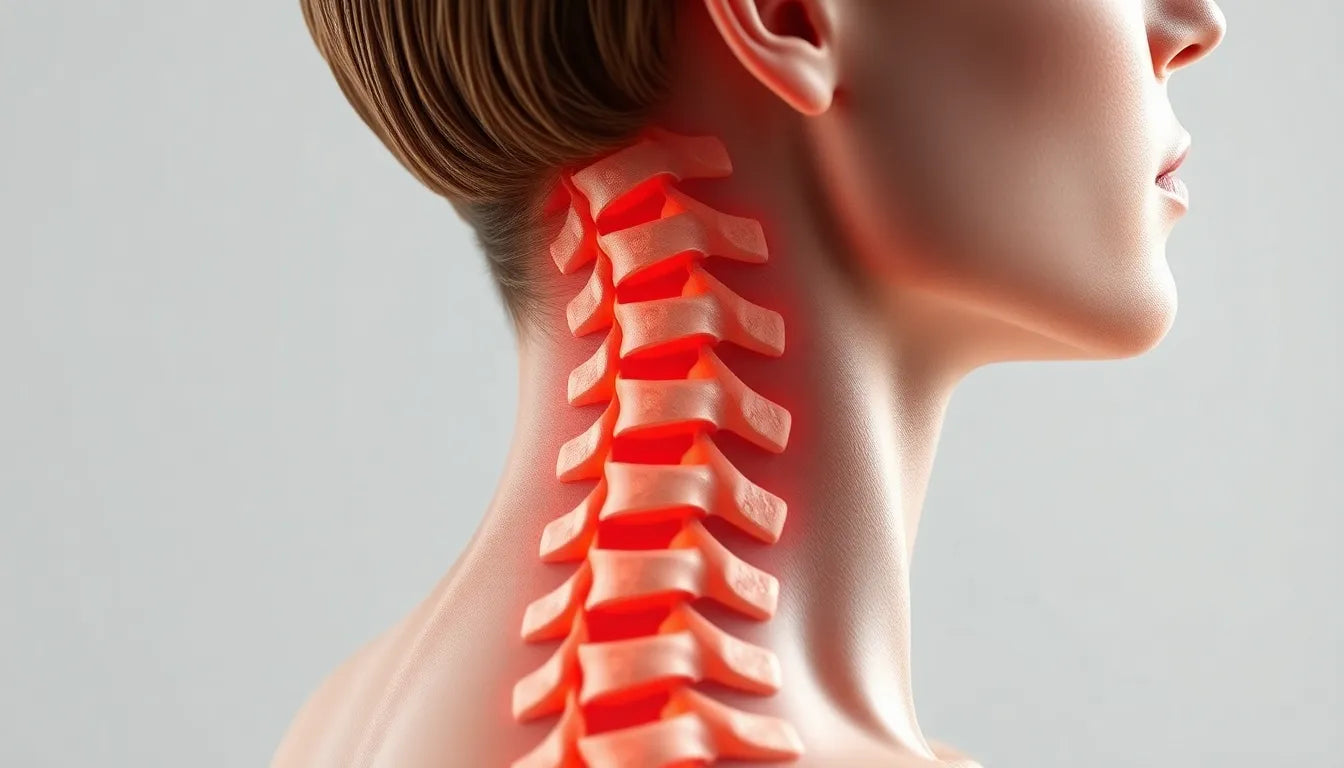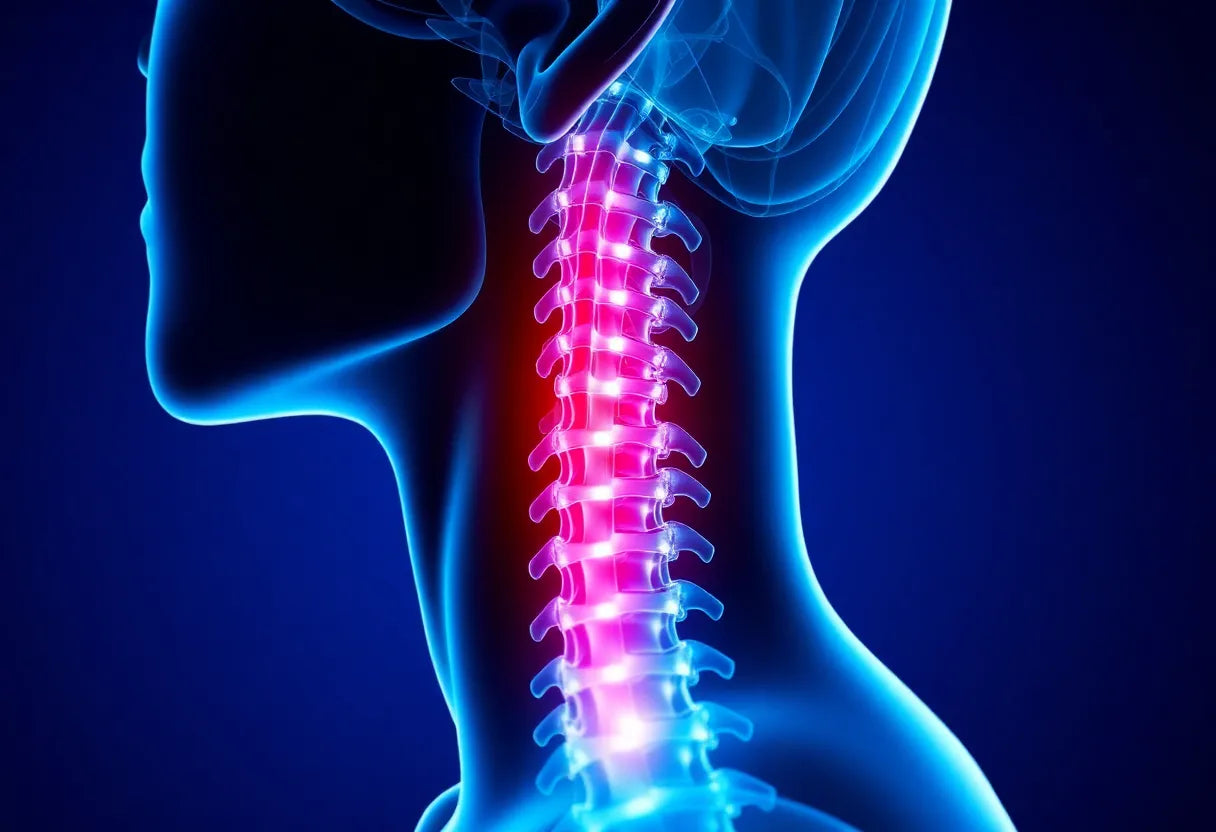Cervical spinal stenosis is a condition that occurs when the spaces within the spinal canal in the neck become narrowed, leading to pressure on the spinal cord and nerves. This can significantly impact daily life, causing discomfort and limiting mobility. Common symptoms include neck pain, stiffness, and a reduced range of motion, which can make even simple tasks challenging. Managing these symptoms is crucial to maintaining a good quality of life, and one effective way to do so is through targeted exercises.
Understanding cervical spinal stenosis
The neck, or cervical region, is a complex structure that supports the head and allows for a wide range of motion. Cervical spinal stenosis can arise from various factors such as aging, arthritis, or injury, which lead to the narrowing of the spinal canal. This narrowing can compress nerves, resulting in symptoms like pain, numbness, tingling, or muscle weakness. Such symptoms can hinder daily activities, emphasizing the need for effective management strategies.
The role of exercise in managing spinal stenosis
Exercise plays a vital role in alleviating the symptoms of cervical spinal stenosis. By engaging in specific neck exercises, individuals can improve flexibility, strengthen muscles, and enhance posture, all of which contribute to reducing nerve compression. The primary goal of these exercises is to relieve pressure on the nerves, thereby improving neck function and reducing pain.
Targeted exercises can help maintain or even increase the range of motion in the neck, which is often compromised in individuals with spinal stenosis. Additionally, these exercises can strengthen the muscles that support the spine, providing better stability and reducing the risk of further injury. Improved posture, achieved through regular exercise, can also alleviate symptoms by ensuring that the spinal column is correctly aligned, reducing unnecessary pressure on the nerves.

Women's Posture Shirt™ - Black
Patented shirt for pain relief and posture—stimulates muscles and improves awareness.
Incorporating these exercises into a daily routine can lead to significant improvements in symptoms and overall neck health. It is, however, important to approach these exercises with caution and to listen to the body's signals, avoiding any movements that cause pain or discomfort. Consulting with a healthcare provider before starting any new exercise regimen is advisable, especially for those with severe symptoms, to ensure that the exercises are appropriate and beneficial.
By understanding and implementing these strategies, individuals with cervical spinal stenosis can take proactive steps towards managing their condition, improving their quality of life, and regaining the ability to perform daily activities with greater ease and comfort.
Key exercises for cervical spinal stenosis
Engaging in specific exercises can play a pivotal role in managing the symptoms of cervical spinal stenosis. These exercises are designed to enhance flexibility, strengthen neck muscles, and improve posture, thereby alleviating nerve compression. Here are some effective exercises to incorporate into your routine:
Chin tuck
This exercise strengthens the deep neck muscles and promotes better posture. To perform a chin tuck, pull your chin straight back as if creating a "double chin," without tilting your head. Hold this position for five seconds and repeat it ten times. Regular practice can help improve neck alignment and reduce strain.
Neck stretch (lateral flexion)
Increasing flexibility and reducing stiffness in the neck can be achieved through lateral flexion stretches. Gently tilt your head towards one shoulder, holding the stretch for five to ten seconds. Repeat on the opposite side. This exercise helps maintain the neck's range of motion and eases tension.
Shoulder blade squeeze
Strengthening the postural muscles is crucial for supporting the neck. To perform a shoulder blade squeeze, pinch your shoulder blades together and hold for five seconds. Repeat this movement ten times. This exercise enhances the strength of the muscles that support the spine, promoting better posture.
Neck rotations
Enhancing neck mobility is vital for individuals with cervical spinal stenosis. Perform neck rotations by turning your head to one side, keeping your chin level. Hold the position for 15 seconds, then repeat on the other side. This exercise helps maintain flexibility and reduces stiffness.
Scalene/upper trap stretch
Targeting upper neck and shoulder tension is essential for relieving discomfort. Sit or stand, gently tilting your head to the side while stretching the opposite side of your neck. Use your hand for gentle overpressure and hold the stretch for 20 seconds. This exercise can alleviate tension and improve neck mobility.
Posture correction/wall posture
Realigning the spine and improving posture can significantly reduce symptoms of cervical spinal stenosis. Stand against a wall, ensuring that your head, shoulders, buttocks, and heels touch the wall. Hold this position for 20 seconds. Consistent practice can help maintain proper spinal alignment.

Men's Posture Shirt™ - Black
Posture shirt with patented tech—activates muscles and relieves neck, shoulder, & back pain.
Cat-cow pose
This yoga-inspired exercise promotes spinal flexibility and relaxation. Begin on your hands and knees, alternating between arching your back (cat pose) and rounding it (cow pose). Hold each position for ten seconds and repeat ten times. This exercise gently stretches the spine and reduces tension.
Child’s pose
The child's pose is a calming exercise that stretches the spine and relaxes the body. Start on your hands and knees, then sit your hips back towards your heels with your arms extended forward. Hold this position for 15 seconds and repeat five times. This pose helps alleviate tension and promote relaxation.
Integrating exercises into daily routine
Consistency is key when it comes to managing cervical spinal stenosis with exercise. Start by incorporating a few exercises into your daily routine and gradually increase the number as your comfort level improves. It's crucial to listen to your body and avoid any movements that induce pain. Progress at your own pace, and remember that even small improvements can lead to significant benefits over time.
Incorporating these exercises into your daily routine can help manage symptoms and improve neck health. However, it's essential to approach these exercises with caution and consult with a healthcare provider, especially if you experience severe symptoms. By taking proactive steps, you can enhance your quality of life and regain the ability to perform daily activities with greater ease and comfort.
Safety and professional guidance for spinal stenosis neck exercises
When dealing with cervical spinal stenosis, safety should always be a priority. Before beginning any exercise regimen, it is essential to consult with a healthcare provider, especially for individuals experiencing severe symptoms. Professional guidance ensures that the exercises chosen are appropriate for your specific condition and do not exacerbate symptoms.
While exercises can be beneficial, it is crucial to be aware of red flags that indicate when to stop. If you experience increased pain, dizziness, or numbness during or after exercises, it is advisable to pause and consult a healthcare professional. These symptoms could indicate that the exercises are not suitable for your condition or that adjustments are needed.
Healthcare providers, such as physical therapists, can offer tailored exercise plans that take into account your unique needs and limitations. They can also provide hands-on guidance to ensure that exercises are performed correctly, minimizing the risk of injury and maximizing benefits.
Frequently Asked Questions
What exercises should I avoid with cervical spinal stenosis?
It is important to avoid exercises that involve neck hyperextension, such as looking up, as these can aggravate nerve compression and worsen symptoms.
When should I see a doctor about my neck pain?
If you experience severe pain, muscle weakness, or symptoms that persist despite regular exercises, it is recommended to consult a healthcare professional for further evaluation and guidance.
Can exercise replace surgery for spinal stenosis?
While exercises can significantly alleviate symptoms and improve quality of life, they may not replace the need for surgery in severe cases. It is important to follow medical advice and consider all treatment options.
How soon can I expect results from these exercises?
Consistent practice of these exercises can lead to noticeable improvements in flexibility and pain reduction within a few weeks. However, results may vary among individuals based on the severity of their condition and adherence to the exercise routine.
Are there any ergonomic aids that can help with posture during exercises?
Yes, ergonomic aids such as neck pillows or posture braces can complement exercises by maintaining proper alignment and reducing strain on the neck during activities.
Incorporating these exercises into your daily routine, along with professional guidance, can help manage symptoms of cervical spinal stenosis effectively. By taking proactive steps, you can enhance your quality of life and regain the ability to perform daily activities with greater ease and comfort.
Källor
- Goodman Campbell. (2025). ”5 Simple Spinal Stenosis Exercises.”
- GoodRx. ”Exercises for Spinal Stenosis.”
- YouTube. ”Exercises for Spinal Stenosis.”
- Instituto Clavel. ”Exercises to Avoid with Lumbar Stenosis.”
- Hackensack Meridian Health. (2023). ”5 Easy Spinal Stenosis Exercises.”
- Journal of Orthopaedic & Sports Physical Therapy. (2017). ”Spinal Stenosis Management.”
- Physical Therapy Specialists. ”Cervical Spinal Stenosis Guide.”
- Mayo Clinic. ”Spinal Stenosis: Diagnosis and Treatment.”
- ChoosePT. ”Physical Therapy Guide for Spinal Stenosis.”
- OAHCT. ”Cervical Stenosis Exercises.”
- Spine.org. ”Cervical Exercise Guide.”























